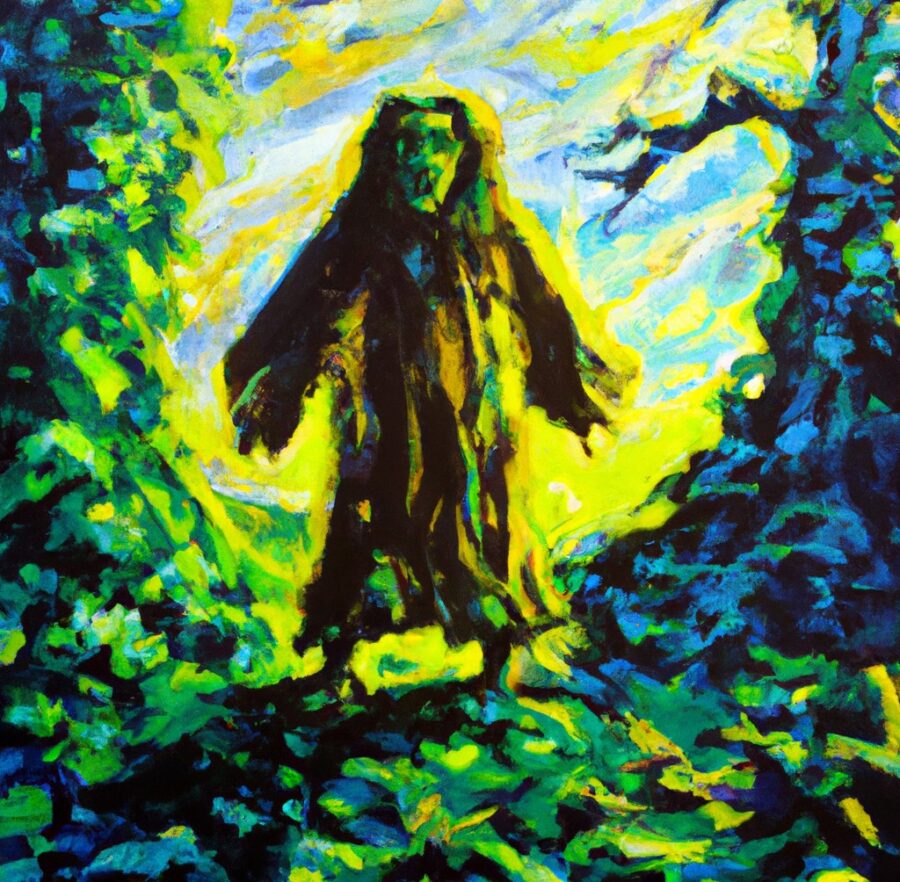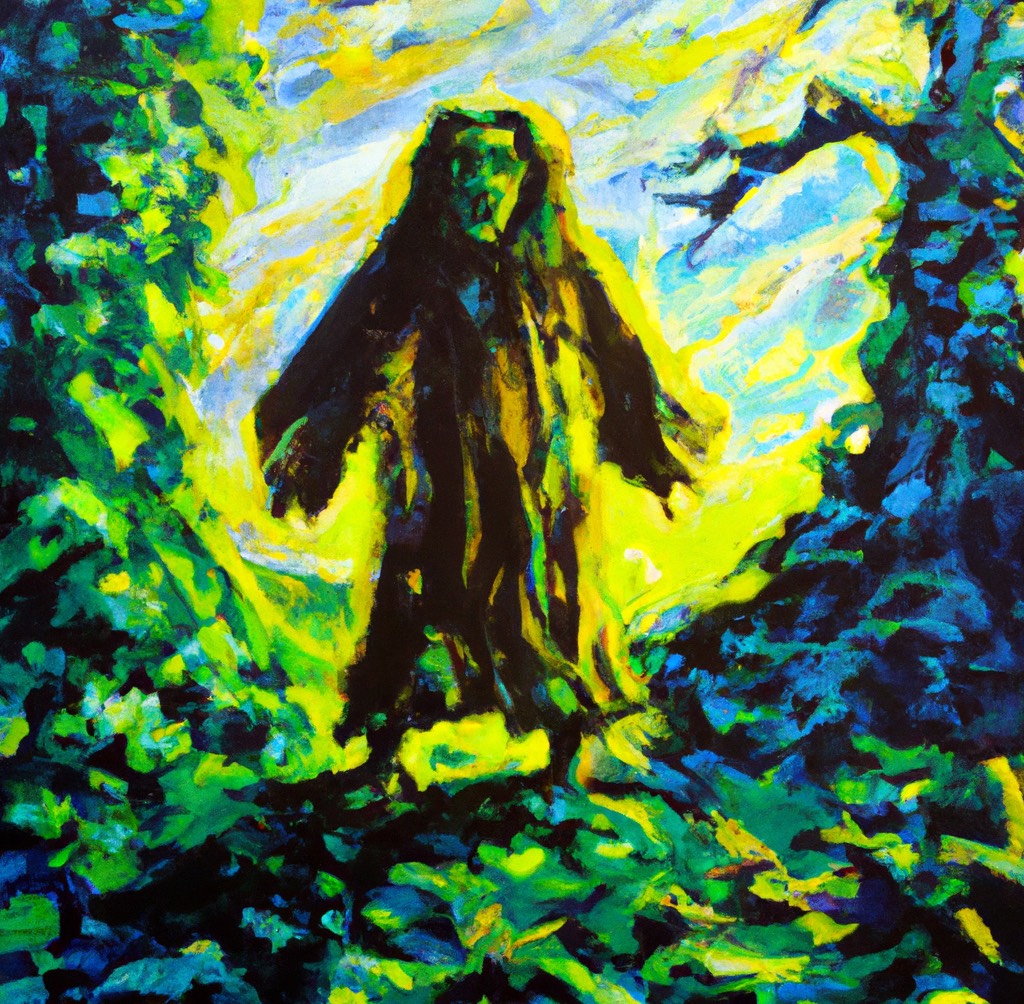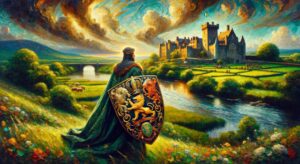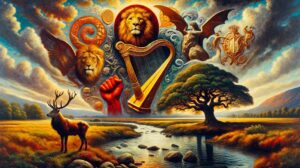The Púca, also known as Phooka, Pooka, or Puca, is a captivating figure in Irish mythology. Known for its shape-shifting abilities and mischievous nature, the Púca is one of the most elusive and intriguing characters in the vast landscape of Irish folklore. This article will explore the Púca’s origins, its various forms, the myths surrounding it, and its role in contemporary culture.
Origins of the Púca
The Púca’s origins are rooted in ancient Irish folklore. The term ‘Púca’ is derived from the Old Irish ‘púcán’, meaning ‘goblin’, but it has been interpreted in various ways, including ‘ghost’, ‘sprite’, or ‘fairy’. It is part of the broader group of supernatural entities known as the Aos Sí or ‘People of the Mounds’, who were believed to inhabit the Irish landscape.
The Púca has parallels in other cultures as well. For example, the English ‘Puck’, a mischievous hobgoblin immortalized in Shakespeare’s ‘A Midsummer Night’s Dream’, shares similar attributes. These cross-cultural connections underscore the universal human fascination with trickster figures and shape-shifting entities.
Descriptions and Depictions of the Púca
The Púca is primarily known for its shape-shifting abilities. It can take on a variety of forms, often appearing as different animals such as horses, goats, cats, dogs, and even hares. Regardless of its form, the Púca is typically portrayed as dark or black, reflecting its association with the night and the unknown.
Despite its changeable nature, the Púca is not seen as inherently evil. It is rather a trickster, delighting in creating confusion and fear. It is also known to give advice and guidance, albeit in a cryptic and riddle-like manner. The Púca’s dual nature — its capacity for both mischief and assistance — makes it a particularly complex and intriguing figure in Irish folklore.
Myths and Legends of the Púca
Irish folklore is rich with tales about the Púca. One of the most common themes involves the Púca transforming into a horse and enticing an unsuspecting traveler to ride on its back. Once the individual is aboard, the Púca would embark on a wild, terrifying ride through the night, only to return the rider to their starting point by dawn, unharmed but thoroughly shaken.
The Púca is also associated with Samhain, the ancient Celtic festival marking the end of the harvest season and the onset of winter. It was believed that on Samhain, the veil between the human and the supernatural world was at its thinnest, allowing entities like the Púca to interact more freely with humans.
The Púca in Modern Culture
The Púca, a legendary creature deeply ingrained in Irish folklore, has left an indelible mark on various literary and cinematic works, manifesting in different forms and guises.
Shakespeare’s “A Midsummer Night’s Dream” introduced audiences to the mischievous character of Robin Goodfellow, also known as “sweet Puck,” resembling the Púca. Sheridan Le Fanu’s novel “Ultor De Lacey: A Legend of Cappercullen” and his short story “The White Cat of Drumgunniol” depict encounters with the Phooka, while Flann O’Brien’s “At Swim-Two-Birds” features the shapeshifting Pooka MacPhellimey.
The 1950 film “Harvey” portrays its titular character as a towering rabbit referred to as a “pooka.” Disney’s “Darby O’Gill and the Little People” showcases a Púca in the form of a deceptive horse. Piers Anthony’s “Crewel Lye: A Caustic Yarn” introduces Pook the Pooka, while R. A. MacAvoy’s “The Grey Horse” features a Connemara pony Púca. Emma Bull’s “War for the Oaks” presents a protective Phouka, and Peter S. Beagle’s “Tamsin” depicts a shapeshifting Púca appearing as a wild pony.
Moreover, modern works like Laurell K. Hamilton’s “Merry Gentry” series and KF Breene’s “Leveling Up” series continue to incorporate the enigmatic essence of the Púca, showcasing its enduring allure in contemporary storytelling. Michelle Franklin’s “Baba Connridh” portrays the Púca as a benevolent being seeking aid.
The Púca in Folk Celebrations
In Ireland, the Púca is not only a mythic figure but also a part of local culture and celebration. The Púca Festival, held annually in County Meath, Ireland, celebrates the spirit of the Púca. The festival, which includes music, arts, and a spectacular light show, is an homage to the Púca and a celebration of Ireland’s rich heritage of folklore and mythology.
The Púca and the Harvest
The Púca is deeply connected to the agricultural calendar, particularly the harvest. It was traditionally believed that the Púca would spoil any fruit or crops left in the field after November 1, which marked the end of the harvest season and the beginning of winter. This myth served as a practical way to ensure that all crops were gathered promptly.
Conversely, the Púca was also associated with abundance. There’s an old Irish saying, “Púca pléascach, nó galar gabhar” (“An exploding Púca, or a goat disease”), which was used to describe an abundance of anything, indicating the Púca’s connection to the bounty of the harvest.
The Púca in Comparative Folklore
Like the banshee and the leprechaun, the Púca has counterparts in other cultures. The English Puck, the Welsh pwca, and the Scandinavian pooka all share characteristics with the Irish Púca, primarily their shape-shifting abilities and their mischievous nature. These similarities highlight the shared human fascination with the supernatural and the unknown.
The Púca and Irish Identity
The Púca, like other figures in Irish folklore, is more than just a story. It is a part of Irish identity and culture, a link to the past, and a way of understanding the world. The Púca’s tales, passed down through generations, provide insights into ancient Irish beliefs and societal norms. Today, the Púca continues to be a vibrant part of Irish folklore, a symbol of the richness of Irish mythology, and a testament to the power of storytelling.
The Púca’s Influence on Modern Perceptions of Supernatural Beings
The Púca has significantly influenced our modern understanding of supernatural beings, particularly in terms of their shape-shifting abilities and their dual nature—both mischievous and helpful. This complex characterization challenges the binary perception of supernatural entities as being either wholly good or wholly evil, offering instead a more nuanced understanding of these beings.







